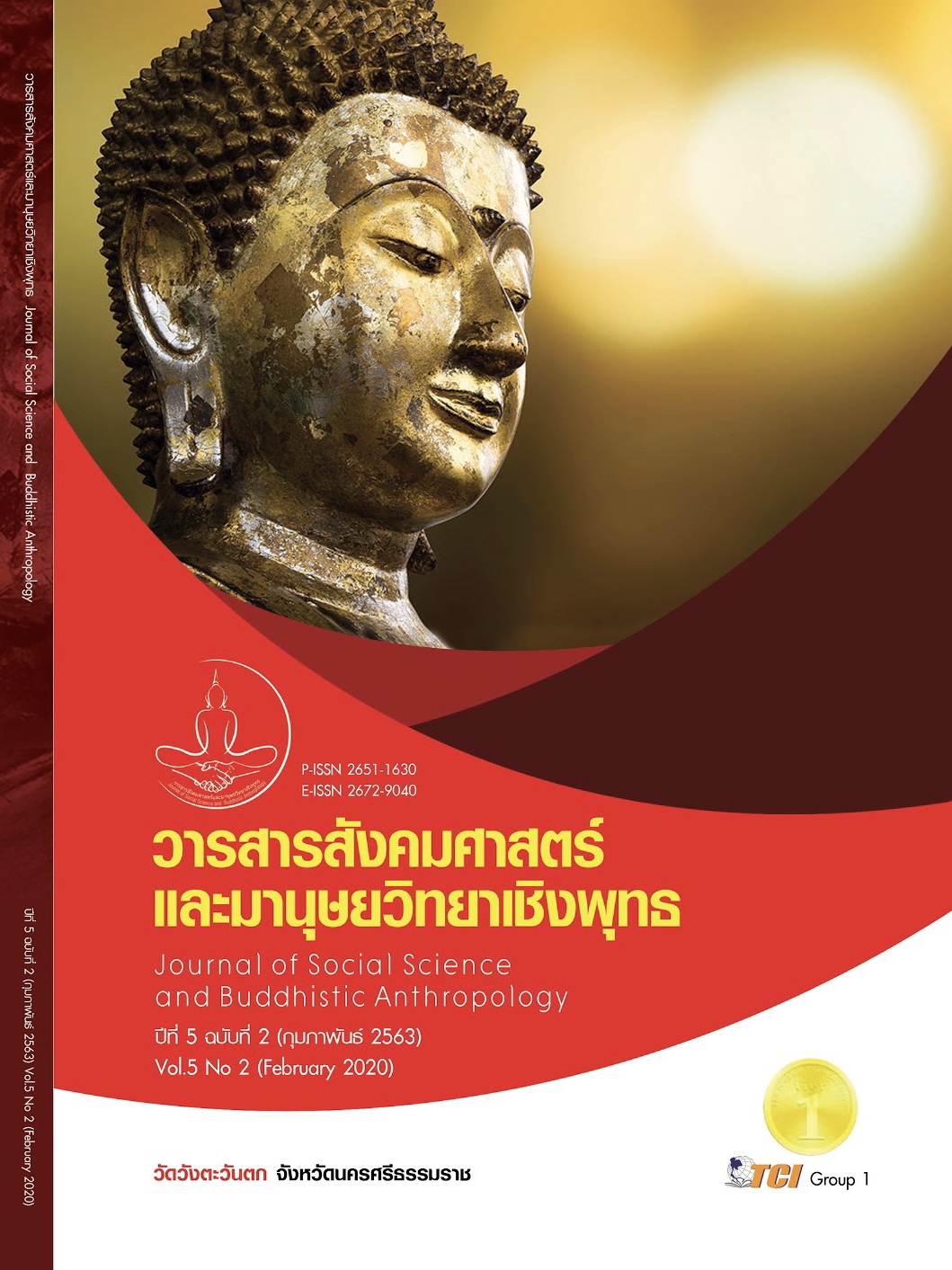MASTER BUDDHISM PROPAGATION MODEL OF SANGHA IN NONTHABURI PROVINCE
Keywords:
Propagation Model, Master Buddhism, SanghaAbstract
The objectives of this research were: 1) to study the general context of master Buddhism propagation model of sangha in Nonthaburi province, 2) to study the factors of master Buddhism propagation and 3) to propose the master Buddhism propagation model of sangha in Nonthaburi province. The methodology was mixed of the qualitative and quantitative. The quantitative research was conducted by studying the samples of 380 respondents. The tool used for data collection was questionnaire. Statistics used frequency, percentage, mean and standard deviation. The qualitative research was conducted by in-depth interviewing 18 key performances and focus group discussion of 12 key informants. The data were analyzed by using Analytic induction technique.
The research findings were: 1) The general context of master Buddhism propagation model of sangha in Nonthaburi province was 1) Planning of Operation, man, budget and materials, 2) Decentralized organization, network, centralized and informal 3) commanding by duty, supporting, independence, and order in the line of work 4) Coordination by using the tools, formal coordinating, direct and informal and 5) Quality control, content, behavior and duration. 2) The factors of master Buddhism propagation model of sangha in Nonthaburi province in overall was at high level ( = 3.97, S.D.=0.40). Each aspect indicated that the controlling aspect was at highest level (
= 4.25, S.D.=0.53), followed by the planning aspect (
= 4.10, S.D.=0.51) and the Coordinating aspect (
= 3.79, S.D.=0.65) respectively. 3) The master Buddhism propagation model of sangha in Nonthaburi province was: 1) Sandassanā, There is a clear process and content easy to understanding, clarify objectives, expert in explaining and clearly and set goals, 2) Samādapanā, use the media to propagate, thorough promotion, Best content, example, convince the listener, cause belief and participation, 3) Samuttejanā, arousing, uphold goodness, be patient, stimulate propagation and meditation, encourage to do good and 4) Sampahaṁsanā, Interesting content, use storytelling for presenting, present by entertainment style, expressing merit and demerit, use polite words to create conformity, know the right time and place.
References
กองแผนงาน. (2552). คู่มือพระสังฆาธิการ. กรุงเทพมหานคร: โรงพิมพ์การศาสนา.
ชำเลือง วุฒิจันทร์. (2525). การพัฒนากิจการคณะสงฆ์และการพระศาสนาเพื่อความมั่นคงของชาติ. กรุงเทพมหานคร: วิทยาลัยปูองกันราชอาณาจักร.
บัญชายุทธ นาคมุจลินท์. (2555). วิเคราะห์การบริหารองค์กรในทางพระพุทธศาสนาของศูนย์การเผยแผ่พระพุทธศาสนาประจำจังหวัดอุทัยธานี. ใน ดุษฎีนิพนธ์พุทธศาสตรดุษฎีบัณฑิต สาขาวิชาพระพุทธศาสนา. มหาวิทยาลัยมหาจุฬาลงกรณราชวิทยาลัย.
พระไพศาล วิสาโล. (2552). พระพุทธศาสนาไทยในอนาคต. กรุงเทพมหานคร: มูลนิธิสดศรี - สฤษดิ์วงศ์.
พระมหาสุริยา วรเมธี และคณะ. (2551). ศึกษาแนวคิดและหลักการในการเผยแผ่พระพุทธศาสนาของพระธรรมทูตไทยในสหรัฐอเมริกา. ใน รายงานการวิจัย. มหาวิทยาลัยมหาจุฬาลงกรณราชวิทยาลัย.
พระศรีรัตนโมลี. (2560). รูปแบบการเผยแผ่พระพุทธศาสนาของพระสงฆ์ไทยในประเทศสาธารณรัฐสิงคโปร์. วารสารบัณฑิตศึกษาปริทรรศน์, 13(2), 97-108.
สมเด็จพระเจ้าบรมวงศ์เธอ กรมพระยาดำรงราชานุภาพ. (2514). ประชุมพระนิพนธ์เกี่ยวกับตำนานทางพุทธศาสนา. กรุงเทพมหานคร: กรมศิลปกร.
สมเด็จพระญาณสังวร สมเด็จพระสังฆราช สกลมหาสังฆปริณายก. (2550). พระธรรมเทศนาทั่วไป. กรุงเทพมหานคร: โรงพิมพ์อักษรไทย.
สมเด็จพระมหาสมณเจ้า กรมพระยาวชิรญาณวโรรส. (2550). การปกครองคณะสงฆ์. กรุงเทพมหานคร: โรงพิมพ์มหามกุฏราชวิทยาลัยในพระบรมราชูปถัมภ์.
สำนักงานเลขาธิการมหาเถรสมาคม. (2553). คู่มือพระสังฆาธิการ. กรุงเทพมหานคร: โรงพิมพ์สำนักงานพระพุทธศาสนาแห่งชาติ.








